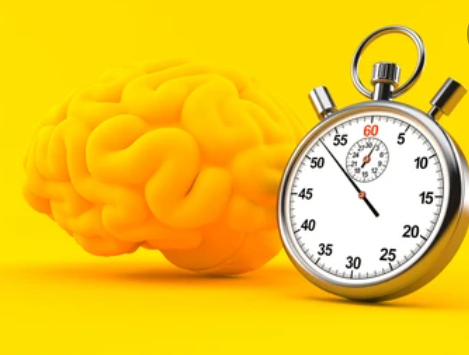Visit somewhere new in your hometown
Ever played tourist where you live? Imagine you have
travelled across the world to stay in your town or city. What would you want to
see? Which foods would you want to eat? What would amaze you?
Experiencing your hometown with new eyes can feel like a
mini-holiday and can help you refresh your perspective on life. You might have
discovered this when friends or family come to stay and you show them around.
They are often enthusiastic about things you have started to take for granted.
To really gain the benefits of a staycation, try researching
your hometown just as you would if you were a tourist. Look it up on
TripAdvisor, or check out Google Reviews for things to do nearby.

Choose one place nearby that you have never been. It could
be a new café, or a new park, or even a monument that has been there for a
hundred years. And, like every good holiday, don’t forget to take photos and
post on social media – you might inspire others to do the same.
Pineapple
How can something this sweet, juicy and refreshing be good
for you too?

Pineapple is not only a perfect snack or dessert, it also
has surprising health benefits.
It contains an enzyme called bromelain, which has two
seemingly different benefits, it’s good for your digestion, and good for
tenderising meat: Bromelain breaks down proteins, so it helps your gut digest
your dinner AND helps soften that piece of chicken on the BBQ.
Some studies even indicate that bromelain can reduce
inflammation, swelling and bruising after injury or surgery. It’s even thought
to help with pain relief.
Pineapple is also high in vitamin C. In fact, one cup of
fresh pineapple chunks will give you more than 130 per cent of your daily
vitamin C requirements. And it is full of other goodies such as thiamine,
manganese, vitamin B6, folate and antioxidants.
How to avoid pineapple tongue burn
Ever eaten fresh pineapple and felt as though your taste
buds have been wiped out? That’s the bromelain. It breaks down proteins,
including the protective mucus that coats your tongue. To avoid this problem,
while gaining the many benefits of pineapple, you could try one of these
tricks:
- Soak the fresh pineapple in salt
water first
- Eat the pineapple with diary such
as yoghurt
- Cook the pineapple, as this
destroys the bromelain (but also reduces the benefits)
- Cut out the tough core, where
bromelain is the most concentrated.
Do you believe you are “not a quick learner?” Did that
perhaps come from an overworked teacher at school? What if you are a good
learner, and even more, what if there were proven techniques you could apply to
improve how well you learn?
Being able to learn quickly has become an absolute essential
of survival in the workplace. We constantly need to learn new systems, new
techniques, or even new ways of doing our jobs as the culture and leadership
changes.

Luckily, there are proven ways to speed up your learning, so
you can achieve more in less time.
1. Keep a beginner’s mind
Even if you have been studying this field or skill for
years, try to approach your next learning like a beginner. When you see
yourself as an expert, you tend to be blind to unusual happenings, you assume
things are a certain way. Beginners are more open to alternative ways of
thinking and ask more questions.
2. Use a digital brain
A whole range of apps exist on your phone – use them. Not to
procrastinate or distract yourself, but to help you remember things. A digital
brain is like a second brain you can use to capture, organise, retrieve, and
archive information, ideas and thoughts. If you use an online calendar, or
master password app, you are tapping into your digital brain, but there is so
much more you can do. You can use apps to remember to do lists, facts,
formulae, links to read later, and you can even record someone delivering a
presentation or speech (with permission of course). Try an app such as Evernote,
Bear or OneNote.
3. Spaced Repetition
You know how your high school teacher told you to revise
regularly and often for exams? They were right. The best way to remember
information is to recall it soon afterwards. Spaced repetition looks like this:
- Within 24 hours of learning
something, write down notes for yourself and then review them by reading those
notes then looking away to recall the most important points.
- Within 48 hours (ie. the next
day), try to recall the information with minimal reading of your notes.
- Within 72 hours, recall the
information again, as you go about your day, eg while waiting in line or
walking to the station.
- A few days later, read through
the information all over again.
4. Break it down
Trying to learn something new all at once can set you up for
failure. Say you want to learn how to surf. Expecting yourself to be able to
stand up on a surfboard right away and catch a wave will only make you feel
overwhelmed. Instead, break down each task into manageable bits. For example,
start by learning how to jump up from lying to standing. Then learn how to swap
your feet. Practice each skill with full attention before moving onto the next.
To be truly heard and understood is a core human need, yet
how often do we feel heard? And more so, how often do we take the time to
really listen to someone else?

Listening does not come naturally. We want to be heard far more
than we want to hear.
It’s rarely ill-intentioned. Often, we enthusiastically want
to relate and show we understand or share their concern, or have had a similar
experience. However, the outcome is the opposite: the relationship suffers, and
the other person feels less connected, and more frustrated.
To improve your active listening, try these tips from
experts:
1. Stop talking. The simplest but hardest tip of all. Give
the other person space to talk, even after they seem to run out of puff. Often
people only get to the real point after they have covered the superficial talk.
Use the acronym WAIT to remind yourself: W.A.I.T stands for “Why Am I Talking?”
2. Clear your mind. Adam Bryant, author of The Corner Office
and The CEO Test, says we should “think of listening as a form of meditation.
You have to clear your mind of everything else, so you can focus entirely on
what the other person is saying.” Bryant advises putting your phone down, and
if you are at your desk, turning your chair around so you are not looking at
the monitor.
3. Don’t jump ahead. “The best kind of listening is about
being comfortable not knowing what you’re going to say next, or what question
you might ask,” says Bryant. Have faith in your ability to respond naturally
and sincerely to the other person, without formulating your response while they
are talking.
4. Remove judgement. “Listening, done well, is an act of
empathy. You are trying to see the world through another person’s eyes, and to
understand their emotions,” Bryant says. Judging the other person for their
words, tone of voice, actions or reactions is not going to help you achieve
empathy.
5. Aim to learn. Use every conversation as a chance to learn
more – about a topic, about a person. Billionaire venture capitalist and co-founder
of LinkIn, Reid Hoffman, says the most important quality he looks for in
employees is an “infinite learning curve.” “I’m looking for an ability to be
learning constantly, and fast.”
Bryant adds, “If you show interest and energy, people will
respond and share what they know and how they learned it. It’s a fast and free
education, plus you’ll build relationships.”
Common listening mistakes to avoid
- Getting distracted. Someone is
talking, but you are thinking about what to cook for dinner. You could be
making eye contact and saying “yeah” and “OK” in all the right places, but you
are not really listening.
- Adding your anecdote. We often
want to show we understand, and that we have shared a similar experience, and
so off we go with a “yes, the same thing happened to me!” story, and we have
hijacked the other person’s conversation.
- Waiting to talk. You know how it
feels: you get the very clear sense that the other person is just waiting for
your noise to stop, before they say their piece. They haven’t listened, they
just want to make their argument, or say something clever.
Another New Year, another set of resolutions. These may
include spending more time with the family, eating more vegetables, and the
popular resolution to exercise more.
Who doesn’t want to feel fitter and healthier? So what stops
us, and what can we do about it?
“Wanting to make exercise a habit and actually doing it are
two different things,” says James Clear, author of the bestseller Atomic
Habits.
“Changing your behaviour is difficult. Living a new type of
lifestyle is hard. This is especially true when you throw in very personal
feelings about body image and self-worth.”
Clear recommends developing a ritual to make starting your
exercise session easier.
“Habits are behaviours that you repeat over and over again,
which means they are also behaviours that you start over and over again. In
other words, if you don’t consistently get started, then you won’t have a
habit. In many ways, building new habits is simply an exercise in getting
started time after time.”
Habit stacking
How to make getting started easier? You can add your
exercise routine on top of another, easier routine. This is known as habit
stacking.
The formula is this:
Before/after/when [CURRENT HABIT], I will [NEW HABIT]. Some
examples:
- Before I get into bed at night, I
will get out my workout clothes for the following morning.
- After I get out of bed in the
morning, I will put on my workout clothes.
- After I take off my work shoes, I
will immediately change into my running shoes.
- When I see a set of stairs, I
will take them instead of the escalator or lift.
- When I listen to my favourite
podcast, I will go for a walk.
Unsure of the right trigger for your habit?
Clear recommends brainstorming a list of your current daily
habits – for instance, get out of bed, take a shower, make a coffee, eat lunch.
You can make your list as long as you like, but what it gives you is a starting
point to find the best place to layer your new habit into your lifestyle.
Clear also suggests making sure your cue is highly specific.
Rather than saying:
“When I take a break for lunch I will do 10 push-ups” change it to: “When I
close my computer for lunch, I will do 10 push-ups next to my desk.”
